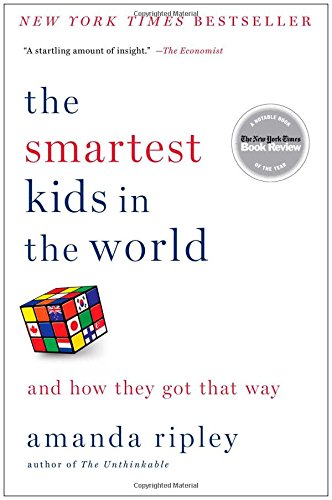
We have been struggling with our sons’ education lately. Moving from a charter school in NC to a public school in VA (albeit in a great district) has been a challenge. We are blessed with two inquisitive sons who love to learn and learn fast. Additionally, we are incredibly invested in their academic achievement. This has all created a perfect storm for wondering if their current schooling situation is meeting their needs. Is it challenging enough? How much can we actually “afterschool” them without driving our whole household crazy (turns out, not much)? This question has been all-consuming lately, keeping me up at night.
My husband and I are both products of public schools. Fundamentally, we believe in them. Yet things seem different now, something has changed. Whether it is our perspective based on our role as parents solely responsible for our kids or that the school system has changed in the 20+ years we were in the system, I am not sure.
*Please note there are affiliate links below. Thank you for your support.*
But this is where the brilliant book The Smartest Kids in the World: And How They Got That Way Amanda Ripley came in to my life.
In this New York Times‘ bestseller Ripley examines the American school system and compares it against three countries that are powerhouses in education: Finland, South Korea, and Poland. She asks big, important questions. She wants to know why the American system is falling behind. What is happening in these other countries that make them so seemingly successful? What can America learn from the educational decisions of these countries?
The book is very readable. Ripley follows three “kids” (in high school or older) as they each enter one country’s system as an exchange student. She gets to know these three students and acquaints us, the reader, with them intimately, too. They come from very different backgrounds and have different motivations for seeking the experience. Accordingly, they each have very different experiences.
The readability of the book is also, in many ways, detrimental to Ripley’s case. After all, can the individual stories of three sole students, each so different, be a representative case study? These are three kids out of millions in the four countries’ in question education system.
Yet, the book is gripping. It is certainly thought-provoking, especially as a mother trying to discover the best track to education for her two sons.
Some important points Ripley brings up are points that we struggle with in America, publicly and with intention, but she asks brutal follow up questions our society tends to avoid.
First, what is the value we place on a teacher?
In the other countries Ripley studies, teachers go through rigorous training and are afforded the esteem, value, and financial compensation commensurate with expectations. The countries that are exceeding, powerfully, expectations and scores not only invest a lot in teachers, but they make it an esteemed profession, something smart people pursue.
Yet she discovers that these countries take it one step further. After their education (and this is the key, it seems), the government gets out of the way. Less standardized testing, requirements, or set curriculum. The theory is that as the teachers are all highly educated and professionally trained, they can then be trusted to do their job, and to do it well.
This makes sense when you consider how we view most other jobs in America: get the proper education, be trusted to do your job, if you do it well you get the money to match. Yet we don’t treat our teachers this way. In fact, Ripley tells stories (all too well known and acknowledged) of teachers in this country who don’t even pass the basic college requirements who become teachers.
Second, Ripley postulates that a lot of this has to do with preeminence of sports and their intricate link to schools.
Because sports matter so much (too much?) to our schools, teachers are too frequently hired not based on their teaching ability but, rather, on their coaching ability. Ripley believes that separating sports from schools entirely could solve this problem.
“In isolation, there is nothing wrong with sports, of course. But they didn’t operate in isolation. Combined with less rigorous material, higher rates of child poverty and lower levels of teacher selectivity and training, the glorification of sports chopped away at the academic drive among U.S. kids. The primacy of sports sent a message that what really mattered – what led to greatness – had little to do with what happened in the classroom. The lack of drive made teachers’ drive harder, undercutting the entire equation.” (p 119)
There are so many more brilliant points that Ripley brings up that makes this a must-read for parents: labeling of kids such as “gift & talented,” the role of the parent and if an involved parent really matters, financial positioning and its relation to education of kids, race and the requisite reporting of such, the division of wealth among school districts, and what traits really matter if a child is to be successful (such as willpower and resiliency).
I could talk about these points for pages as they are fascinating and illuminating.
But the final, third point that shook my shoes had to do with Ripley’s discoveries about the role of math.
You see, I am a words-girl. I love books, writing, and literature. I had a terrible math teacher in 5th grade who convinced me that I was completely inadequate at the subject and ever since then I have held on to that feeling in my insides and checked out as far as math is concerned.
My brother, an MBA and top-end financial manager, gets so irritated with me. I will say, frequently, “I don’t do math.”
“How can you just NOT DO MATH?!” he exclaims, frustrated. “You can’t just NOT DO MATH in our society!”
According to Ripley, my feelings and my brother’s are both justified.
Ripley’s research concluded that the way I feel about math is wide-spread and widely accepted across the U.S. Apparently, my attitudes, the feelings instilled in me by my infamous 5th grade math teacher, are a common problem with American school children.
“In middle school, Kim and Tom had both decided that math was something you were either good at, or you weren’t, and they weren’t. Interestingly, that was not the kind of thing that most Americans said about reading. If you weren’t good at reading, you could, most people assumed, get better through hard work and good teaching. But in the United States, math was, for some reason, considered more of an innate ability, like being double-jointed.” (p77)
That hit me as so spot on I underlined five times.
So what’s the problem with this attitude, with my attitude? What’s wrong with spending so much time and energy teaching my sons to read at home while completely avoiding their math education?
Well, Ripley believes, based on her studies, that this may be a critical component to get our education system back on track. Math, and the lack of emphasis that America places on the subject, could be the key difference between failing kids with their education or seeing excellence.
Ripley minces no words:
“Why did math matter so much? Some reasons were practical: More and more jobs required familiarity with probability, statistics, and geometry. The other reason was that math was not just math.
Math is a language of logic. It is a disciplined, organized way of thinking. There is a right answer; there are rules that must be followed. More than any other subject, math is rigor distilled. Mastering the language of logic helps to embed higher-order habits in kids’ mind: the ability to reason, for example, to detect patterns and to make informed guesses. Those kinds of skills had rising value in a world in which information was cheap and messy.”
Point to my brother, then.
Ripley’s book really is a must-read for parents trying to navigate the murky world of schooling. Her eye-opening realizations and brutal assessments are important points to have in your parenting toolbox.
So what’s all this mean for my family then?
Well, I am spending more time emphasizing math for my sons. We still read together, a lot, and I am proud of the literati they are becoming. But given the massive ball Ripley lobbed in to my court that I simply can’t ignore, I am encouraging math skills in their life, too.
Ultimately, we’re looking at all of the school options available to us right now and know we have some tough decisions. Given what Ripley shares, it seems that charter schools have the flexibility, funding, creativity, teaching staff, and (usually) the right priorities when it comes to education. Yet not all areas (such as ours) have charter schools available to them. Private schools are, of course, a significant financial investment.
Will charter school, private school, “afterschooling,” pull-out programs or any of those be the perfect solution? No. Nothing is ever perfect. We still expect problems and issues to arise wherever we end up.
As Ripley says:
“Everywhere I went, in every country, people complained about their education system. It was a universal truth and a strangely reassuring one. No one was content, and rightly so. Educating all kids to high levels was hard, and every country – every one – still had work to do.” (p146)
But navigating the decision of how to educate our children to the best of our abilities and resources, which seems like blindly navigating a minefield in many ways, is something worth researching and spending time discussing.
Buy The Smartest Kids in the World: And How They Got That Way by Amanda Ripley.
Last Updated on October 22, 2019 by Mrs. Family Trip
